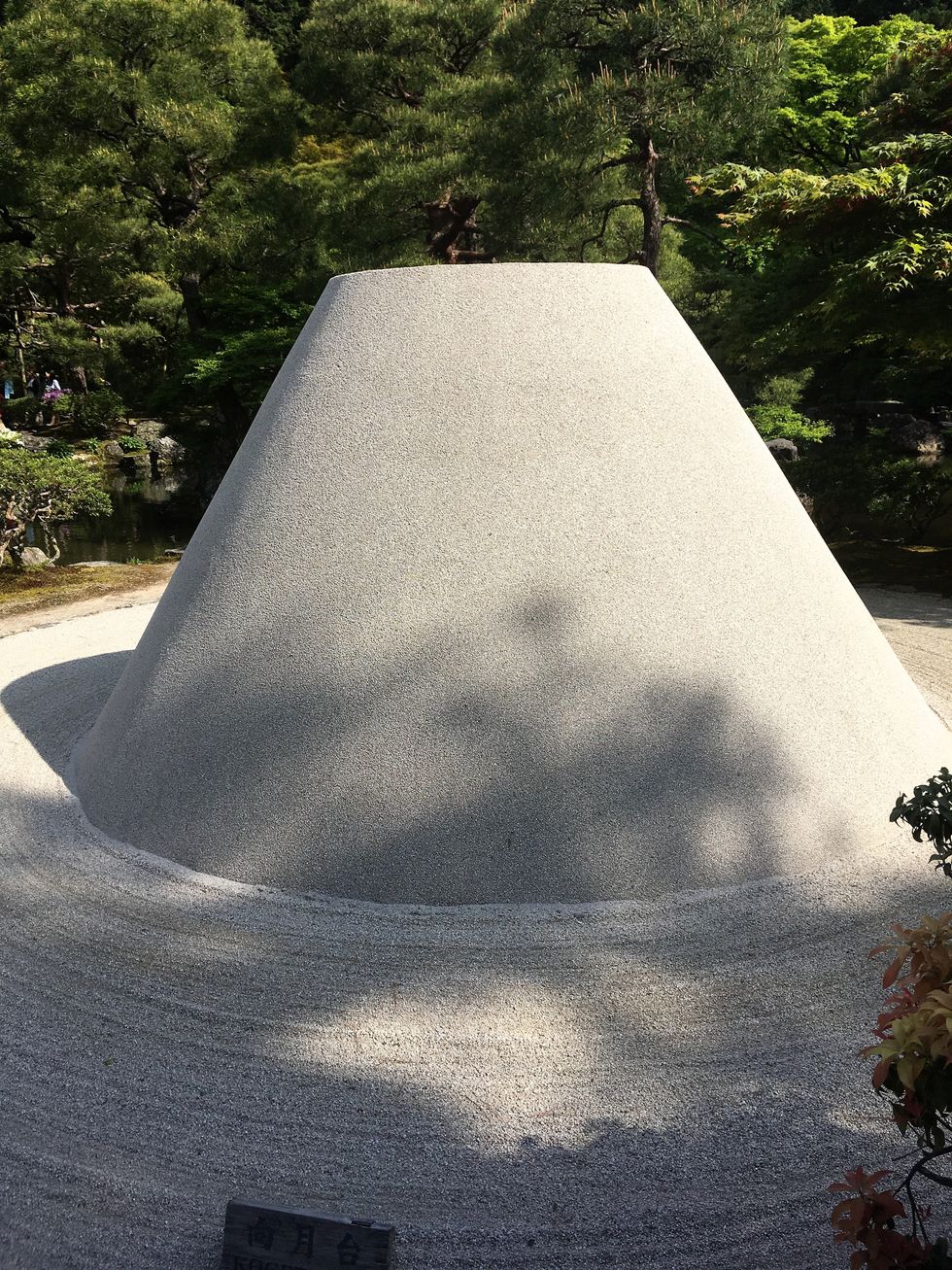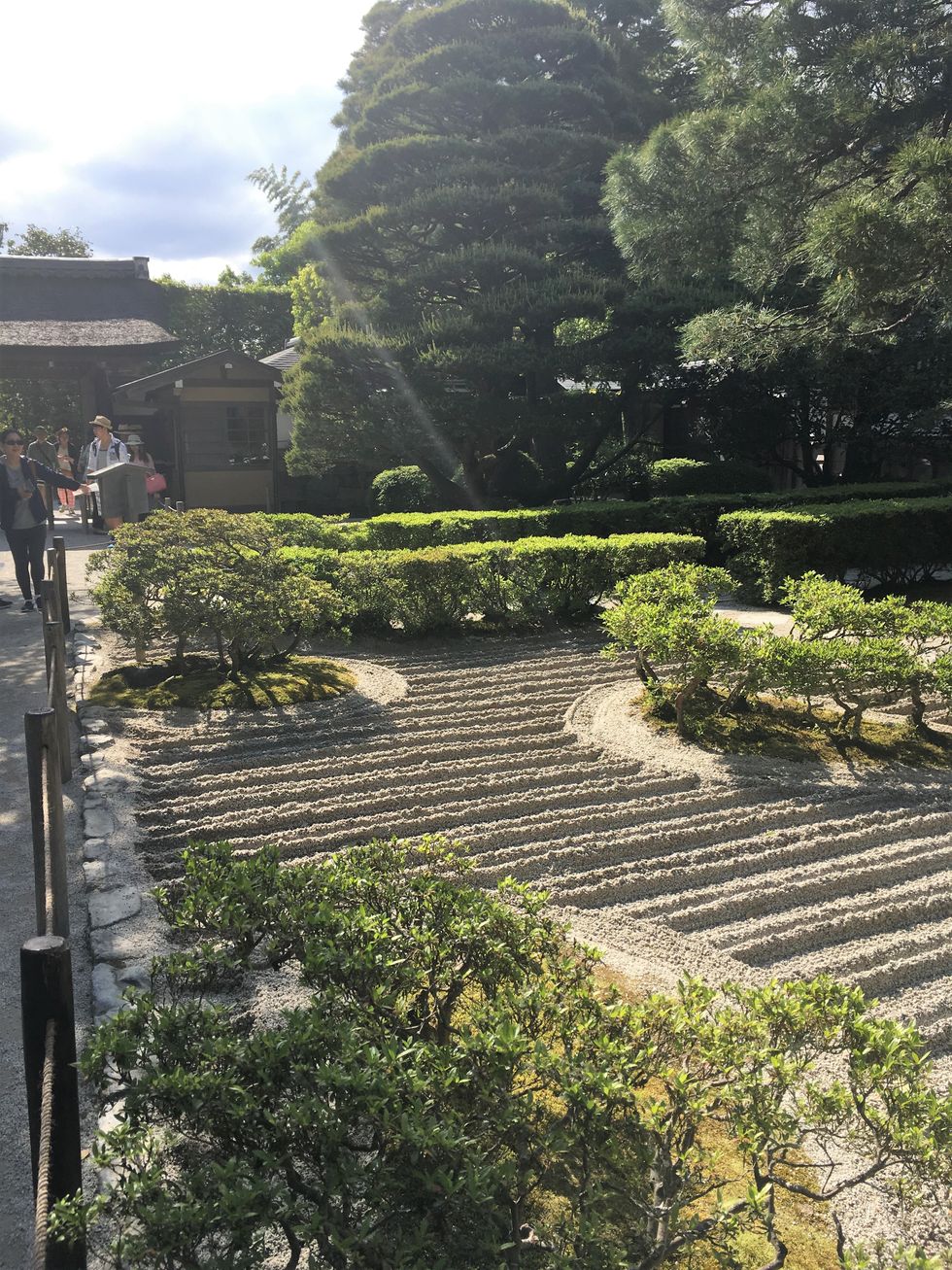Kyoto is known as the historical and traditional center of Japan. As the former capital of the country and host to many different temples and shrines, as well as the former palace and too many museums to count, the title is definitely well-earned. Two of the more famous sites in Kyoto are the Golden and Silver Pavilions, or Kinkakuji and Ginkakuji. Everyone knows about Kinkakuji--it is one of the first things to pop up in any search of Japan, and the glistening golden walls of the pavilion are all over tourist sites. Ginkakuji doesn't pop up nearly as much as Kinkakuji, and when people have to choose between the two to visit during their time in Kyoto, it often gets pushed to the side. For me, Ginkakuji is equally as important, if not more so, than Kinkakuji, and should be a key stopping point for all visitors to Kyoto.
The Silver Pavilion was built after the Golden Pavilion, and a lot of people think that the name was chosen to make note of the contrast between the two. While it's called the Silver Pavilion, it's not actually covered in silver, unlike the Golden Temple. Don't let that put you off, though; the pavilion itself is beautiful in its simplicity, and there are many other small buildings around it that have the same general architectural theme. Next to the pavilion is a giant sand cone called the "Moon Viewing Platform," which is so cool because its shape is so perfect.
The pavilion itself is stunning, but the grounds are the part of the visit that really drew me in. Visitors can walk through beautiful mossy trees and see the gardens surrounding the pavilion. The view of Kyoto at the top of the path is also amazing. One of the most attractive parts of the temple, though, was the Zen-style sand garden that covered a large portion of the grounds. The sands seemed to ripple in the sunlight, and the combination of shadows and high points was almost hypnotizing.
Even though I visited the temple during Golden Week (one of the busiest weeks for tourism in Japan), I was surprised by how small the crowds were. Granted, the temple was definitely busy, and I would love to go back when there aren't as many visitors, but the lines moved quickly, and we were never stuck in one place for too long. It was a very different experience from when I went to Kinkakuji and had trouble moving anywhere in the crowds!
I highly recommend visiting Ginkakuji, not only for the beauty of the temple and the grounds, but also for the connection to Zen Buddhism and ancient Japanese culture.




















